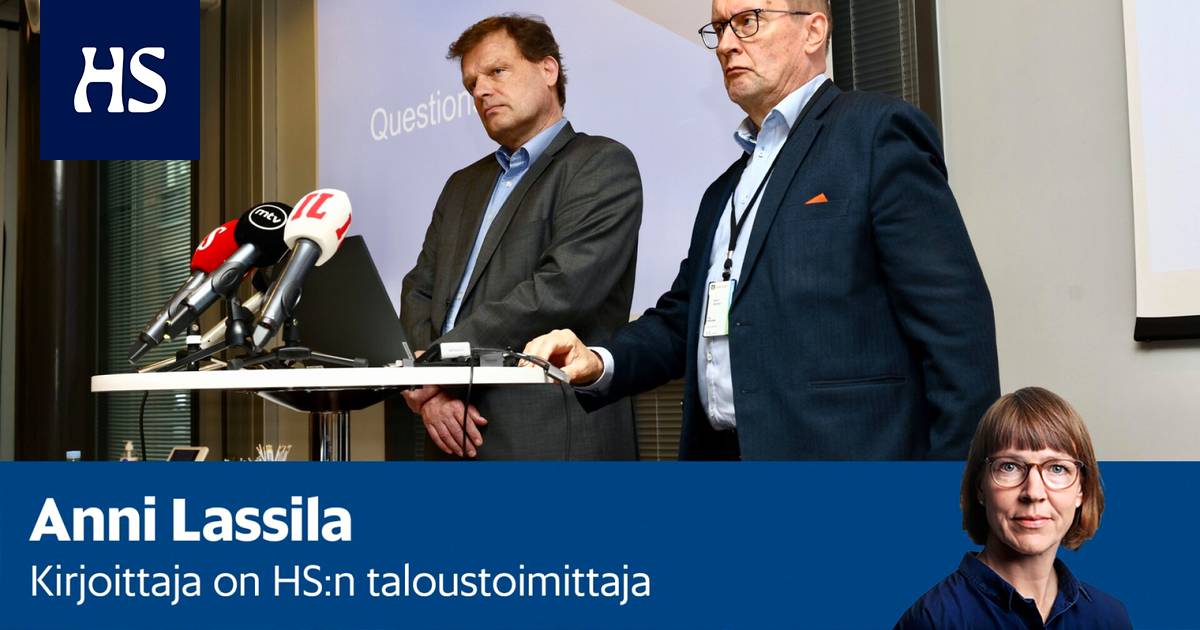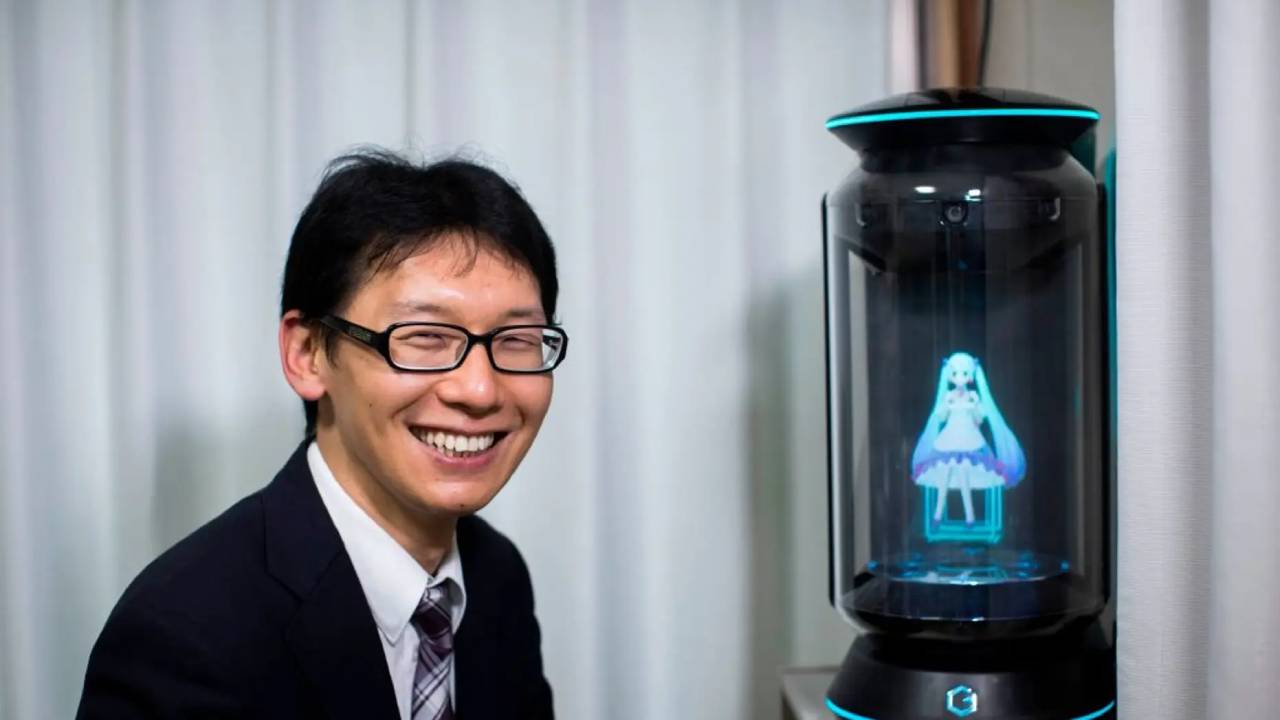Finland’s ambitious goal of reducing emissions will not be scrapped by the collapse of a nuclear power project. In its press release, Rosatom, the Russian state, alludes to legal action against Fennovoima, writes Anni Lassila, HS’s financial journalist, in her analysis.
Fennovoiman managing director Joachim Specht and Chairman of the Board Esa Härmälä were on Monday at a press conference in the middle of the mouth. It is no small matter to terminate a power plant deal worth more than EUR 7 billion.
Agreement According to Härmälä, the dismissal was due solely and exclusively on the delays and inability of the Russian party Raos Project to deliver the power plant project. Raos Project is a subsidiary of the Russian state nuclear power company Rosatom.
From the beginning, both the engineering design of the plant and the documentation required for permit processing have been severely delayed. After eight years, the construction of the plant is still in its infancy.
This year, there have also been problems with payments for bills at the power plant site.
Rosatom is issued a statement stating that it was “Very disappointed” to the conclusion. Rosatom points out that Fennovoima’s decision was taken without consulting the largest shareholder in the project, ie itself. According to Rosatom, the reasons for the decision are completely incomprehensible to it.
According to Härmälä, the grounds for dismissal are “very clear”. Still, the final game can still be boring and dirty, especially when Finland’s NATO application and the related efforts to influence it are mixed up.
In the press release, the company states that it “reserves the right to defend its interests in accordance with the agreements and the law”. The company therefore intends to challenge the termination of the agreement.
Although, according to Fennovoima’s executives, Russia’s attack on Ukraine did not directly affect the decision and Härmälä said that the company was not pressured in any way, nuclear power is and always has been the most political.
The Loviisa nuclear power plant was ordered from Russia in the 1970s by the President Urho Kekkonen requirement.
In Russia the nuclear industry is closely linked to the nuclear weapons industry. Rosatom serves as president Vladimir Putin under the guidance of the administration.
Over the winter, as Russian troops were concentrated on the Ukrainian border, building a Russian nuclear power plant began to feel like an increasingly bad idea.
At the latest, when the attack began, it was clear that a EUR 7 billion purchase of nuclear technology from a state of unpredictable warfare would be unacceptable in any way.
Minister of Employment and the Economy Mika Lintilä (Central) said in parliament in March that the power plant would not receive a building permit.
Some listed companies that are partners in the power plant project have already recorded the value of their holdings at zero.
Still, only Fennovoima was finally able to make a decision to permanently suspend the project.
“
The large-scale industry that owns the Olkiluoto nuclear power plant will certainly not be promoting a new nuclear power project for some time.
Over here By now, EUR 600-700 million of shareholders’ money has already been dumped into the site pit and structures. More than a third of this has come from Russia.
More than a third of Fennovoima is owned by Rosatom’s subsidiary.
The rest of the money has come from Finnish shareholders, including energy companies in many municipalities. Municipalities have deplored the pouring of money on the convicted project.
Some have also longed for a successor to the project. In principle, it would be possible for the power plant to be ordered from a western company.
It might be possible to make use of some of the existing structures, even if the project goes completely new in terms of permits.
Joachim Specht, President and CEO of Fennovoima (in front) and Esa Härmälä, Chairman of the Board, will leave the press conference in Helsinki on Monday.
On the road however, there are a few twists. A substitute for the 34% of Russians should be found first. That may not be possible, as Fennovoima’s shareholder has certainly not been crowded since the plant’s original builder, Eon, withdrew from the project in 2013.
The large-scale industry that owns the Olkiluoto nuclear power plant will certainly not be promoting a new nuclear power project for some time. The 17-year-old construction work on Olkiluoto’s third reactor has left trauma. The power plant is still not operating normally.
Fortum, which owns the Loviisa nuclear power plant, has applied for an extension for the Loviisa reactors. The company will have enough to do to renew and maintain them, as long as it first overcomes the massive economic challenges posed by the Russian war in both the Russian and German gas markets.
Read more: Did Russia bomb its own nuclear power business? A plant producing important parts for the Pyhäjoki nuclear power plant was hit by a rocket attack, the attack was probably carried out by Russia
Read more: The Pyhäjoki nuclear power plant is progressing with Russian money, even if many shareholders want to leave the project – the background is a secret agreement, the terms of which are crushing for Finnish municipalities
Rosatomin the price of the power plant it sold was also considerably cheaper than it would be to buy the power plant from any other company now.
In general, it is very difficult to see anyone wanting to embark on a high-risk construction project of 15 years and more than EUR 10 billion in the near future as the world around them changes at its current pace.
The need for electricity is expected to increase sharply in the coming decades as fossil energy and hydrogen are replaced by emission-free alternatives. But at the same time, new technologies are constantly being developed.
State the new climate and energy strategy, currently under discussion, talks about decentralized small-scale nuclear power generation, wind power is expected to rise by thousands more and offshore wind power is expected to become competitive before long.
One would think that the collapse of a major nuclear power project would make the calculations of the strategy new in any case. However, this did not happen, as Fortum’s decision to apply for an extension to the Loviisa power plant only became known after the completion of the strategy calculations.
The extension of the Loviisa power plants will replace the gap left by Fennovoima’s Hanhikivi until at least about 2050.
#analysis #difficult #imagine #successor #sunken #Fennovoima #nuclear #power #plant #site #Rosatom #Russian #state #hints #legal #action #Fennovoima




/s3/static.nrc.nl/wp-content/uploads/2024/04/web-2604spoarneslot.jpg)



